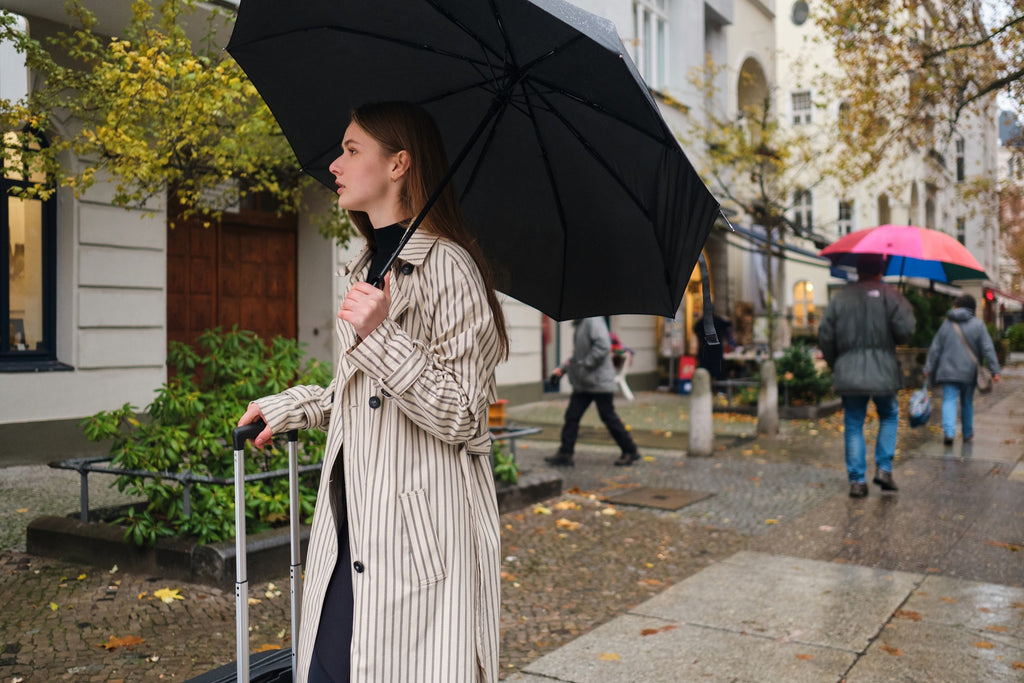What Are Umbrellas Made From? A Deep Dive Into Their Composition
Umbrellas, the simple yet effective tool that shields us from rain and sun, have been around for centuries. But have you ever stopped to wonder what materials go into the making of this everyday object? In this article, we'll explore the key components of umbrellas and the materials used to craft them.
The Canopy: Polyester, Nylon, or Pongee?
The canopy is the part of the umbrella that provides the actual protection from the elements. It's typically made from some type of fabric, but not just any fabric will do. The material needs to be water-resistant, durable, and lightweight.
One common material is polyester. It's a synthetic fabric known for its strength, durability, and resistance to most chemicals, stretching, and shrinking. Polyester is also quick-drying, which makes it ideal for umbrellas.
Nylon is another popular choice. It's a strong, elastic, and lightweight material. Its resilience makes it perfect for umbrella canopies that need to withstand the wind. However, nylon absorbs more water than polyester, which can make the umbrella heavier when wet and longer to dry.
A higher-end option is pongee fabric, a type of thin and lightweight silk that's tightly woven for increased water resistance. Pongee silk is soft to touch and gives the umbrella a luxurious feel.
The Frame: Steel, Aluminum, Fiberglass, or Wood?
The frame comprises the shaft and the ribs of the umbrella. The shaft supports the entire structure, while the ribs hold the canopy in shape.
Steel is a common material for umbrella frames due to its strength and affordability. However, steel frames are susceptible to corrosion, especially if the protective coating wears off.
Aluminum frames are lighter than steel ones, making them a popular choice for compact and portable umbrellas. They're also resistant to corrosion.
Fiberglass frames are even lighter and more flexible than aluminum frames. They're excellent at withstanding wind gusts without breaking, but they tend to be more expensive.
Finally, some luxury umbrellas feature wooden frames. These offer a classic look but are generally heavier and less durable than metal or fiberglass frames.
The Handle: Rubber, EVA Foam, or Wood?
The handle affects the comfort and usability of the umbrella. It needs to be sturdy and comfortable to hold.
Rubber handles provide a good grip, they can be molded into various shapes for ergonomic comfort, and are especially useful for larger umbrellas or in windy conditions.
EVA Foam Handles are also a popular material used in umbrella handles due to its soft, cushiony feel and excellent durability. This type of foam is resistant to UV radiation and cracking, making it an ideal choice for outdoor gear. EVA foam handles provide a comfortable grip, reducing hand fatigue during extended use. These handles are also non-slip, ensuring a secure hold even in wet conditions. Despite their high performance, EVA foam handles are typically lightweight and affordable, making them a common choice for both compact and full-size umbrellas.
Wooden handles, like wooden frames, add a touch of luxury to the umbrella. They can be carved and polished for a high-quality finish.
In conclusion, the materials used in umbrellas vary greatly depending on their type, quality, and price point. Whether it's the water-resistant fabric of the canopy, the resilient structure of the frame, or the comfortable grip of the handle, each component plays a crucial role in protecting us from the elements. Next time you open your umbrella, take a moment to appreciate the combination of materials and engineering that goes into its creation.
So, if you're in the market for a new umbrella, remember the importance of materials and construction. Whether you're looking for a sturdy pongee canopy to withstand the strongest downpours, a lightweight aluminum frame for portability, or a luxurious wooden handle for style and comfort, you'll find it all at Umbrellas Direct Australia.
Browse our extensive collection today and experience the difference quality materials make. After all, why settle for less when you can have an umbrella that is not just a tool, but a statement of style and durability?
CLICK HERE TO VIEW OUR FULL UMBRELLA RANGE










 AUD
AUD